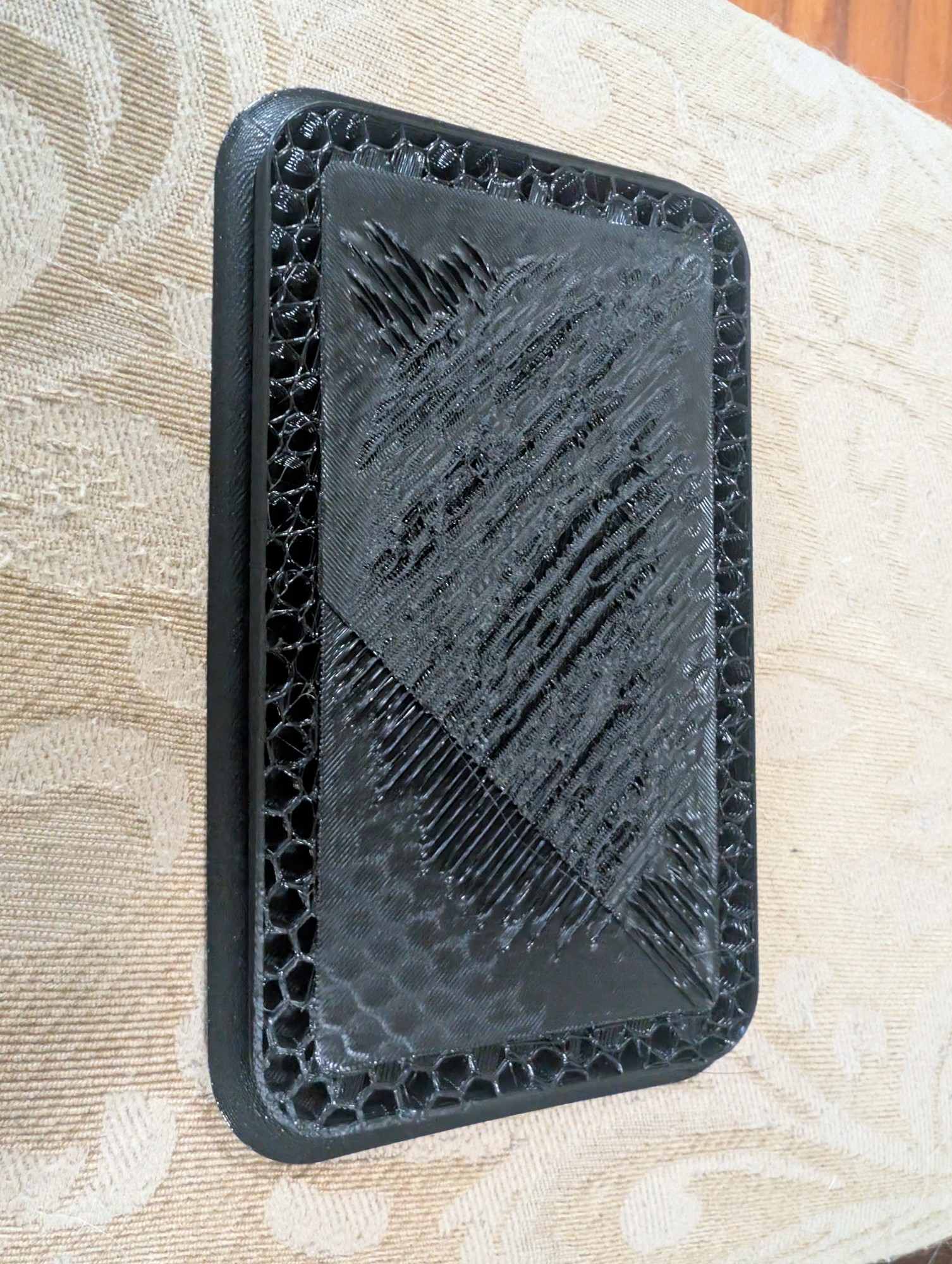I always start with checking extruder step calibration, I find that is the cause of most of my issues that look like this.
3dprinting
Thank you!
I would think over extrusion. Too much material pushes up to the sides and forms these wavy structures.
Is that the first layer? Looks like leveling.
What printer are you using?
No sorry, the angle of the picture lacks depth. It's about 10mm into the print.
Prusa mk4
Not enough squish on first layer, and/or too low of a flow rate. Slowing your infill speed down may help some too. The hex pattern includes a ton of movement where the filament needs more time to stick without getting pulled over the corners. Those errors stack up.
In complex designs, if I want the hex pattern for aesthetics, I actually build it in FreeCAD. It is just a couple of arrays. Use clones or copies of your parts sections, quickly make them solid, make a big block of hex, and use the solid copies as booleans to shape the hex block into whatever gaps. With clones, if you plan out the workflow, the whole thing is still parametric. Mess with the wall thickness of the hex, and then test slice it a few times until most of the hex patterns are solid continuous extrusions. Then you can let the slicer do a more efficient automatic infill elsewhere like cubic, but still get the hex aesthetic, and it will print the hex as high quality perimeters while still printing fast infill.
I chose honeycomb for it's supposed structural strength but I can use whatever.
The picture is bad but this is a few hours into the print.
I actually had tried raising the z offset a bit, I will reduce that.
The infill speed seems like a good idea too so I'll slow that down
3d cubic is more universally strong in all directions. Each layer has an infill offset. The offset allows for material to have a place to expand or escape.
One of the things that is not apparently obvious at first is that infill does not contain stops and retractions along the path. Everywhere that the pattern crosses is just over extruded. Look very carefully at the layer by layer slicing, and the individual layer step travel path. You'll see how it works and differs from other feature types.
I learned this by printing something with like 60-70% triangular infill. The printer kept making a terrible noise. It turned out that the high infill percentage and stacked triangles caused the number of overlaps in infill to rise drastically. After around half the print completed, the z-hop wasn't enough to clear all the over extrusions in the infill overlaps.
Different infills handle the overlapping in unique ways. Some extrude the entire pattern every layer. Others alternate between an X or Y half of the pattern on every other layer... Or at least that is how it worked last time I went into the details to solve some of my issues.
If you have the computer memory, you can load the sliced version back into FreeCAD to see even more detail.
I think you nailed it. i changed the infill to cubic and slowed it down and its printing fine so far
Ooh thats interesting I might try that
